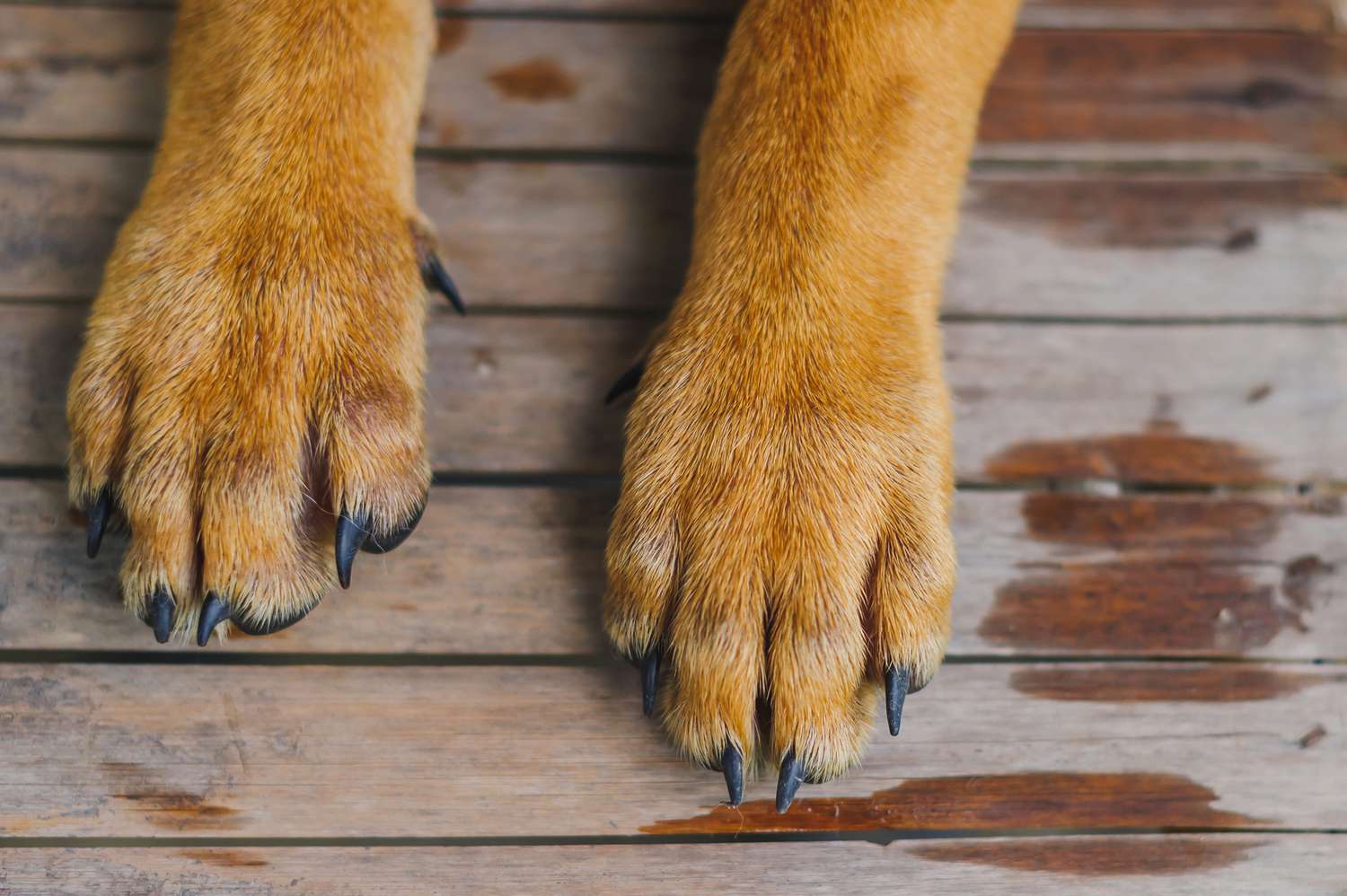Lorem Ipsum
"Neque porro quisquam est qui dolorem ipsum quia dolor sit amet, consectetur, adipisci velit..."
"There is no one who loves pain itself, who seeks after it and wants to have it, simply because it is pain..."
6 Ways For Protecting Puppy Paws In Cold Weather

You're prepared to travel the winter trails with your four-legged best friend, eager to admire the snow-covered evergreens and enjoy some quality time together. What about their paws, though? Should dogs prepare their paws for snow before going outside? The quick response is "yes"!
Paw injuries are more frequent in the winter due to slick ice and snowy surfaces, the usage of ice-melting chemicals, the chilly weather, and the hidden dangers that hide under the snow. Read more about avoiding paw injuries including cuts, irritation, and frostbite, as well as how to tell when your dog needs care.
Keep your dog's paws warm and dry throughout the winter
An ounce of prevention is worth a pound of cure, as Benjamin Franklin once stated. Check the weather before taking your dog on an adventure outdoors. The breed, size, type of coat, and degree of acclimatization to cold weather all affect a dog's tolerance to the cold.
It may not be safe for tiny dogs with thin coats (like Chihuahuas) to remain outside in temps between 30 and 40 F. Little dogs shouldn't go outside for more than a brief bathroom break when the temperature falls below 25 F. While it's vital to exercise care, medium-sized dogs may be able to endure temperatures between 15 and 20 F for brief periods of time.
You're prepared to travel the winter trails with your four-legged best friend, eager to admire the snow-covered evergreens and enjoy some quality time together. What about their paws, though? Should dogs prepare their paws for snow before going outside? The quick response is "yes"!
Paw injuries are more frequent in the winter due to slick ice and snowy surfaces, the usage of ice-melting chemicals, the chilly weather, and the hidden dangers that hide under the snow. Read more about avoiding paw injuries including cuts, irritation, and frostbite, as well as how to tell when your dog needs care.
Keep your dog's paws warm and dry throughout the winter
An ounce of prevention is worth a pound of cure, as Benjamin Franklin once stated. Check the weather before taking your dog on an adventure outdoors. The breed, size, type of coat, and degree of acclimatization to cold weather all affect a dog's tolerance to the cold.
Up to temperatures between 20 and 35 F, which might be potentially dangerous, large-breed dogs fare well. Your dog is at risk of developing hypothermia or frostbite at 15 degrees Fahrenheit.
Here's how to best get ready for a walk with your dog that will be enjoyable and less dangerous for paw injuries if you've decided it's okay to take them outdoors.
To avoid the formation of ice, trim the hair on the paws
Cut the fur sticking out from between the toes using scissors with caution (or ask a groomer to assist you). Use dog paw wax next to moisten the pads, establish a barrier between them and the ground, and prevent ice from building up on the stubble from the cut hair.
Add dog booties for additional protection
The inside of fleece or flannel will keep paws warm, and the tread on the soles will stop them from slipping or scratching their paw pads. Especially if your dog has been running, check the fit of their boots every 15 minutes. Dogs in the snow also randomly lose shoes!
After each excursion, clean or wash their paws
Using a washcloth dampened with warm water helps break up ice crystals on paws, softly warms the feet, and aids in removing any salt or chemical deicing agents.
Adapt the duration of your walks
Winter is here! Just cutting the length of your stroll might keep you and your pet safe and prevent extended exposure to hazardous situations. In the winter, try taking two short strolls as opposed to one lengthy one.
Watch your dog
Watch out for these warning symptoms of dog paw injuries or being too chilly if your pet isn't wearing foot protection:
-
strolling more slowly
-
using voice or whining to get your attention
-
shivering or touching you to stay warm
-
weakening, limping, or raising a paw
It's time to get indoors as soon as the dog feels uneasy.
Keep your dog's hydration up
Walking outdoors might make you and your pet thirsty even when it is winter. Be careful to give your pet water whenever you pause to drink. Your pet is kept healthy all around if they drink enough water.
How to Recognize and Handle Dog Paw Injuries in the Winter
Seeing how your dog behaves while spending time outdoors will help you spot any potential paw problems. Keep an eye out for redness, blood, paw licking, and visible injuries in addition to keeping an eye out for the pain indicators described before.
Paw scratches and cuts
Does the dog's paw seem to be torn or cut? Warm water should be used to clean the wound, and any foreign particles in the paw should be carefully removed with tweezers. Finally, to disinfect the area, wash it with a mild antibacterial soap. Apply pressure to the region by wiping with a soft, clean towel. A veterinarian will need to treat the wound if the bleeding doesn't stop in 10 to 15 minutes. In order to keep the area clean, use a gauze bandage, but don't wrap it too tightly.
Frozen paws
If there isn't a cut, you could be concerned that your pet's paws have frostbite. Ears, tails, and paw pads are all susceptible to frostbite. At first, the skin will become pale, but as the animal heats up inside, the skin will redden, expand, and peel. While it may be uncomfortable, don't let your dog lick the afflicted region too much. Use a warm washcloth. It's time to contact the veterinarian for help if the skin becomes black rather than red.
Chemical toxicity
Have you seen your pet licking their paws to clean them? They could have trodden in salt or ice-melting substances. These compounds have the potential to burn the paw pads painfully. If you think your pet has come into touch with these substances, immediately rinse the paws, then gently wash them with mild soap and rinse with warm water.
Call your veterinarian right away and let them know that your pet may have consumed salt or ice-melt chemicals on your winter stroll if they start behaving strangely, such as excessive licking, drooling and lapping at the air, coughing, vomiting, or drinking an excessive quantity of water. They may advise you on how to handle a potential poisoning or point you in the direction of the clinic for further treatment.
As a dog owner, be prepared for the winter
By protecting your dog's paws in the winter, you can be certain that you two may enjoy many walks together on balmy winter days. Take a minute this evening as you snuggle up to examine your dog's paws. Does the hair between the toes need to be trimmed? May moisturizing cream be used on the pads to repair cracking from the dry winter weather? Soothe the paws to prepare for your next outdoor activity.
It may not be safe for tiny dogs with thin coats (like Chihuahuas) to remain outside in temps between 30 and 40 F. Little dogs shouldn't go outside for more than a brief bathroom break when the temperature falls below 25 F. While it's vital to exercise care, medium-sized dogs may be able to endure temperatures between 15 and 20 F for brief periods of time.
Up to temperatures between 20 and 35 F, which might be potentially dangerous, large-breed dogs fare well. Your dog is at risk of developing hypothermia or frostbite at 15 degrees Fahrenheit.
Here's how to best get ready for a walk with your dog that will be enjoyable and less dangerous for paw injuries if you've decided it's okay to take them outdoors.
To avoid the formation of ice, trim the hair on the paws
Cut the fur sticking out from between the toes using scissors with caution (or ask a groomer to assist you). Use dog paw wax next to moisten the pads, establish a barrier between them and the ground, and prevent ice from building up on the stubble from the cut hair.
Add dog booties for additional protection
The inside of fleece or flannel will keep paws warm, and the tread on the soles will stop them from slipping or scratching their paw pads. Especially if your dog has been running, check the fit of their boots every 15 minutes. Dogs in the snow also randomly lose shoes!
After each excursion, clean or wash their paws
Using a washcloth dampened with warm water helps break up ice crystals on paws, softly warms the feet, and aids in removing any salt or chemical deicing agents.
Adapt the duration of your walks
Winter is here! Just cutting the length of your stroll might keep you and your pet safe and prevent extended exposure to hazardous situations. In the winter, try taking two short strolls as opposed to one lengthy one.
Watch your dog
Watch out for these warning symptoms of dog paw injuries or being too chilly if your pet isn't wearing foot protection:
-
strolling more slowly
-
using voice or whining to get your attention
-
shivering or touching you to stay warm
-
weakening, limping, or raising a paw
It's time to get indoors as soon as the dog feels uneasy.
Keep your dog's hydration up
Walking outdoors might make you and your pet thirsty even when it is winter. Be careful to give your pet water whenever you pause to drink. Your pet is kept healthy all around if they drink enough water.
How to Recognize and Handle Dog Paw Injuries in the Winter
Seeing how your dog behaves while spending time outdoors will help you spot any potential paw problems. Keep an eye out for redness, blood, paw licking, and visible injuries in addition to keeping an eye out for the pain indicators described before.
Paw scratches and cuts
Does the dog's paw seem to be torn or cut? Warm water should be used to clean the wound, and any foreign particles in the paw should be carefully removed with tweezers. Finally, to disinfect the area, wash it with a mild antibacterial soap. Apply pressure to the region by wiping with a soft, clean towel. A veterinarian will need to treat the wound if the bleeding doesn't stop in 10 to 15 minutes. In order to keep the area clean, use a gauze bandage, but don't wrap it too tightly.
Frozen paws
If there isn't a cut, you could be concerned that your pet's paws have frostbite. Ears, tails, and paw pads are all susceptible to frostbite. At first, the skin will become pale, but as the animal heats up inside, the skin will redden, expand, and peel. While it may be uncomfortable, don't let your dog lick the afflicted region too much. Use a warm washcloth. It's time to contact the veterinarian for help if the skin becomes black rather than red.
Chemical toxicity
Have you seen your pet licking their paws to clean them? They could have trodden in salt or ice-melting substances. These compounds have the potential to burn the paw pads painfully. If you think your pet has come into touch with these substances, immediately rinse the paws, then gently wash them with mild soap and rinse with warm water.
Call your veterinarian right away and let them know that your pet may have consumed salt or ice-melt chemicals on your winter stroll if they start behaving strangely, such as excessive licking, drooling and lapping at the air, coughing, vomiting, or drinking an excessive quantity of water. They may advise you on how to handle a potential poisoning or point you in the direction of the clinic for further treatment.
As a dog owner, be prepared for the winter
By protecting your dog's paws in the winter, you can be certain that you two may enjoy many walks together on balmy winter days. Take a minute this evening as you snuggle up to examine your dog's paws. Does the hair between the toes need to be trimmed? May moisturizing cream be used on the pads to repair cracking from the dry winter weather? Soothe the paws to prepare for your next outdoor activity.






























